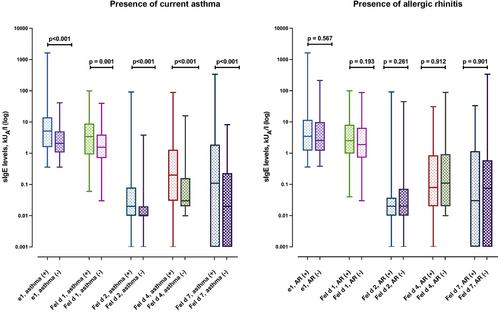Sensitization patterns to cat molecular allergens in subjects with allergic sensitization to cat dander
Abstract
Background
The use of molecular allergology has increasingly become common in the diagnosis and management of allergic diseases. However, there is still a lack of data on cat molecular allergens in adults. Therefore, we aimed to uncover the sensitization patterns to cat molecular allergens.
Methods
Participants were recruited from the West Asthma Sweden Study, a population-based study enriched with asthma subjects aged 16–75 years. Of 1872, 361 individuals were positive for cat dander immunoglobulin E and were further analysed for cat molecular allergens (Fel d 1/2/4/7). Sensitization patterns were classified as monosensitization, polysensitization, and concomitant sensitization, and were related to demographic and clinical measurements.
Results
Among cat-sensitized subjects, 84.2% were sensitized to secretoglobin, while 42.4% were sensitized to lipocalins. Nearly half of the subjects were monosensitized to Fel d 1. Polysensitization was observed in 20.2%, and concomitant sensitization to protein families was seen in 7.2%. Asthma prevalence, cat exposure, and rural living were associated with poly- and concomitant sensitization to protein families. Concomitant sensitization to single allergens was more common in those with asthma than in those without, while concomitant sensitization to both Fel d 1 and Fel d 4 was the most common pattern in individuals with asthma. Sensitization patterns also differed according to cat ownership and the degree of urbanization.
Conclusion
Sensitization to molecular allergens was observed in 90.9% of cat-sensitized subjects and showed variations across participants' background characteristics and the presence of asthma. Identification of sensitization patterns to cat allergens might provide better characterization of cat-allergic subjects.


| 公司名称 | 产品信息 | 采购帮参考价格 |
|---|
 求助内容:
求助内容: 应助结果提醒方式:
应助结果提醒方式:


